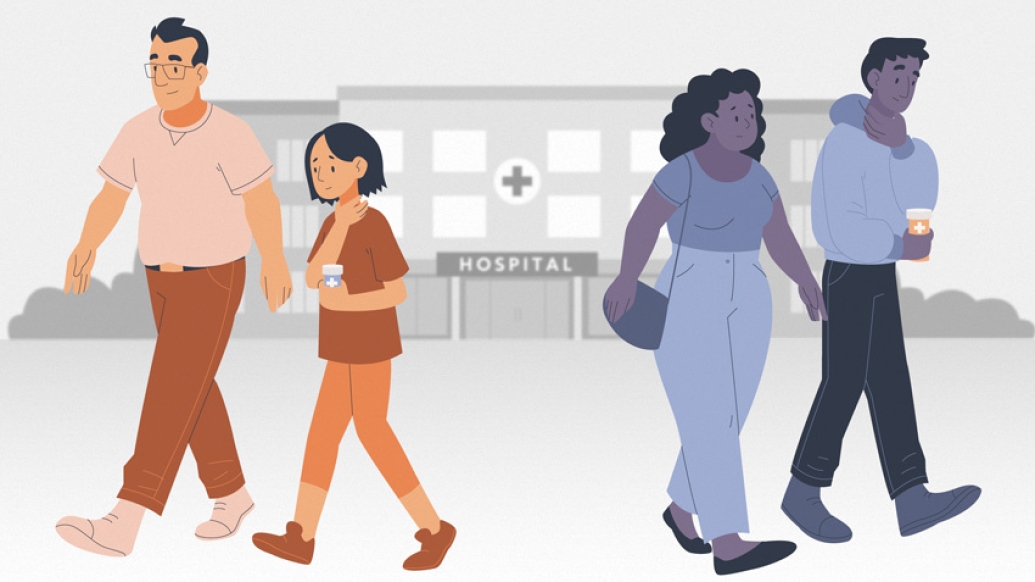Young patients had same pain control, but took home far less opioid medication, after standard prescription size in hospital computer system was lowered based on evidence of actual use.
2:54 PM
Author |

A small tweak to hospitals' prescribing systems might make a big difference in reducing risk from leftover opioid pain medication, while still making sure surgery patients get relief from their post-operation pain, a new study suggests.
In teens and young adults having their tonsils taken out at a major children's hospital, patients went home with 29% fewer doses of opioid painkillers, but reported similar pain control, after researchers reduced the default opioid prescription size that doctors saw in their ordering system. Leftover doses raise the risk of long-term opioid use and the potential for misuse.
Meanwhile, prescription sizes remained high in a comparison group of young adults who had their tonsils out during the same time in nearby surgical centers that didn't change the default prescription size. The study, from a team at Michigan Medicine, the University of Michigan's academic medical center, is published in JAMA Network Open.
The new default prescription size – 12 doses – at U-M Health C.S. Mott Children's Hospital was based on a survey on how many opioid doses young patients actually take for tonsillectomy pain. It replaced the previous default size of 30 doses, though doctors were always free to prescribe more or less.
After the default changed in October 2020, the percentage of patients who left the hospital with 12 doses went from 1% to 44%, the average prescription size went from 22 to 16 doses, and there was no significant change in pain control satisfaction scores or the number of prescription refills within two weeks of the operation.
Meanwhile, young adults who had their tonsils out at U-M's University Hospital or other U-M Health surgical centers during the same time saw little change in prescribing. They received around 30 doses of opioids on average.
"Our findings demonstrate that hospitals can reduce excessive opioid prescribing without worsening pain control simply by implementing an evidence-based default setting for opioid prescriptions written in electronic health records," says lead author Kao-Ping Chua, M.D., Ph.D., a U-M pediatrician and member of the Susan B. Meister Child Health Evaluation and Research (CHEAR) Center and the U-M Institute for Healthcare Policy and Innovation. "Because almost every hospital uses electronic health record systems, this low-cost intervention could easily be used to right-size opioid prescribing after surgery across the country."
Potential for use in other operations
Chua notes that tonsillectomy is one of the most common reasons for opioid prescriptions in adolescents and young adults.
He and his colleagues deliberately did not announce that the change in the default settings was occurring. He notes that the fact that prescribing changed so dramatically despite the lack of awareness of the change was remarkable.
"Our findings suggest that default settings have a powerful ability to affect how doctors prescribe opioids", he said. "While this could be used to improve quality, it could also have unintended effects if the defaults are not based on evidence on patient opioid needs."
Our findings suggest that default settings have a powerful ability to affect how doctors prescribe opioids.Kao-Ping Chua, M.D., Ph.D.
He notes that the evidence-based acute pain prescribing guidelines published by the Opioid Prescribing and Engagement Network based at U-M could be adopted as default opioid prescription order sets. The new study could help inform new guidelines for how many opioids to prescribe after tonsillectomies in teens and young adults.
Like Podcasts? Add the Michigan Medicine News Break on Spotify, Apple Podcasts or anywhere you listen to podcasts.
While giving prescribers flexibility to customize opioid prescriptions is important, the default prescription size in order sets signals what is appropriate for most patients.
This is especially important at teaching hospitals, Chua notes, because physicians in training are often the ones entering discharge prescriptions and may not yet have extensive experience with post-procedure pain control needs.
He notes that the defaults make it easy to choose the appropriate prescription size, because doing so involves the fewest clicks. That's important in busy surgical settings because doctors are often pressed for time.
More about the study
The study enrolled 247 adolescents and young adults on the pediatric and general otolaryngology services of Michigan Medicine between October 2019 and July 2021. Of these patients, 131 were pediatric otolaryngology patients who were mostly aged 12-21 years. The remainder were general otolaryngology patients who were mostly 18-25 years old.
The 12-dose default reflected the number of opioid doses that about three-quarters of patients reported taking before the defaults were implemented. The American Academy of Otolaryngology, which includes most physicians who perform tonsillectomies to treat sleep and breathing issues in children and young adults, recommends non-opioid pain medication such as acetaminophen or ibuprofen over opioids.
"While non-opioid pain medications should be the first option for tonsillectomy pain, it's hard to know in advance which patients will get adequate relief from these medications and which will not, so there's a tendency among surgeons to prescribe opioids 'just in case'," Chua said. "If they do choose to prescribe an opioid, they may as well prescribe an amount that reflects what patients actually need. An evidence-based default setting in the order set makes it easy for them to do this."
SEE ALSO: Study: Half of pediatric opioid prescriptions are "high risk"
In addition to assessing pain control, the authors found that the new default did not affect a variety of other outcomes, such as emergency department visits for pain after surgery or worsened anxiety. Chua notes that hospitals wishing to implement new default settings would ideally collect data on these outcomes to assess for unintended effects.
Refill requests did not increase significantly, although Chua notes that a large study might have shown an increase in refills. Still, he notes, many surgeons have told him that they are willing to tolerate somewhat higher refill rates if it means decreasing the likelihood of leftover opioids.
Chua notes that in tonsillectomy, opioid prescriptions are often written for liquid medications that are easier to swallow than pills, and are harder to obtain outside of major hospital pharmacies. But leftover opioid liquids are also harder to dispose of safely because many dropoff locations aren't able to take them.
Leftover opioids should never be poured down a drain or flushed down a toilet; mixing them with coffee grounds or cat litter and disposing in a tied-shut garbage bag is preferred. Learn more about safe opioid disposal.
Other co-authors include pain medicine specialist and opioid researcher Chad Brummett, M.D., pediatric otolaryngology chief Marc Thorne, M.D., statistician Sophia Ng, Ph.D., and Mary Donahue, all from U-M. Chua credits the Michigan Medicine Health Information Technology Services electronic health record team with assistance in changing the default settings in the tonsillectomy prescription order set.
The study was funded by the National Institute on Drug Abuse (DA048110).
Paper cited: "Association Between Default Number of Opioid Doses in Electronic Health Record Systems and Opioid Prescribing to Adolescents and Young Adults Undergoing Tonsillectomy," JAMA Network Open. DOI: 10.1001/jamanetworkopen.2022.19701
Live your healthiest life: Get tips from top experts weekly. Subscribe to the Michigan Health blog newsletter
Headlines from the frontlines: The power of scientific discovery harnessed and delivered to your inbox every week. Subscribe to the Michigan Health Lab blog newsletter

Explore a variety of healthcare news & stories by visiting the Health Lab home page for more articles.

Department of Communication at Michigan Medicine
Want top health & research news weekly? Sign up for Health Lab’s newsletters today!





